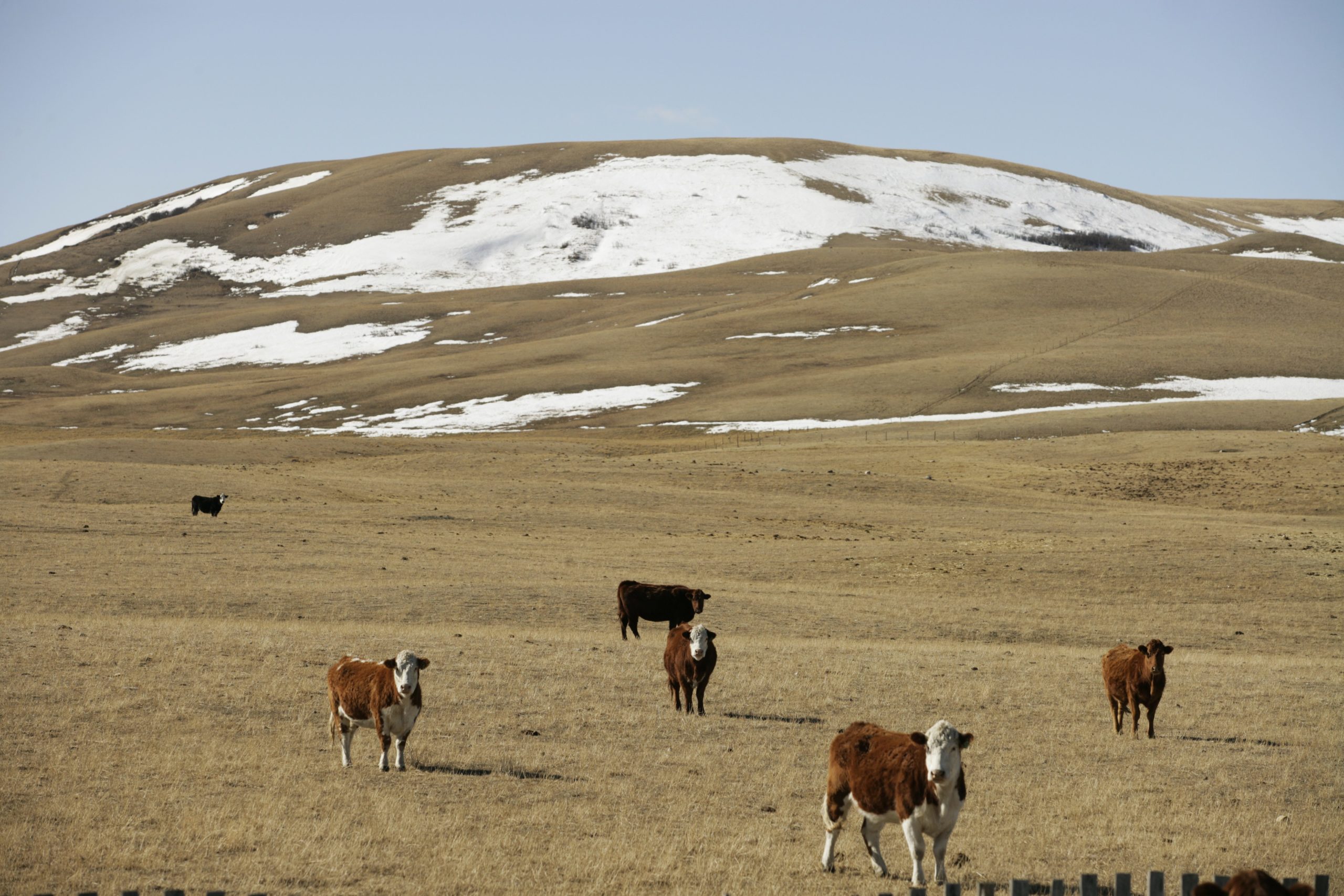Cattle producers now using 10 federally-operated community pastures in Saskatchewan will need to be ready to run them in 2014, while a community pasture in southern Alberta will leave ranching to join the army.
The federal government on Friday listed the first 10 Saskatchewan community pastures to be transferred to the provincial government at the end of the 2013 grazing season in November next year, then to “patron-controlled” operation in 2014.
Listed for transfer are the Excel, Keywest and Estevan-Cambria pastures in the Weyburn district; the Wolverine and McCraney pastures in the Watrous district; the Fairview and Newcombe pastures in the Rosetown district; the Park pasture (North Battleford district); Lone Tree pasture (Swift Current); and Ituna Bon Accord pasture (Foam Lake district).
Read Also

U.S. livestock: Cattle strength continues
Cattle futures on the Chicago Mercantile Exchange were stronger on Friday, hitting fresh highs to end the week.
The initial list of 10 stems from the federal government’s plans, in its April 2012 budget, to divest all 87 of its community pasture sites (61 in Saskatchewan, 24 in Manitoba, two in Alberta) by 2018.
The government also announced Friday the community pasture on Canadian Forces Base Suffield, about 45 km northwest of Medicine Hat, Alta., will be closed in 2014.
The Suffield pasture’s land then reverts back to the control of the Department of National Defence, “which will determine its future usage,” the government said Friday.
CFB Suffield is already Canada’s largest military training area, hosting operations of Defence Research and Development Canada (DRDC), Suffield’s British Army Training Unit (BATUS) and others.
“Smooth transition”
The 10 sites named Friday in Saskatchewan were picked based mainly on “interest from patrons, proposals received and consultations and discussions with patron advisory committee chairs,” the provincial government said. “Other factors such as land titles and oil and gas activity were also considered.”
The pastures’ patrons will have the opportunity to own or lease the pastures, the province said in a separate release Friday. The province added it will work with Farm Credit Canada “to develop workable financing options for patron groups interested in purchasing their pasture.”
“Patrons have had cattle grazing these pastures for years; they know this land better than anyone else; they are our best environmental stewards; and they will continue to have access to these lands which are important to their businesses,” provincial Ag Minister Lyle Stewart said.
The province’s recommended principles for transfer call for each pasture to be maintained as a complete block. Any sales would be based on market value and any sale of native prairie land would be subject to no-break and no-drain conservation easements.
“In addition, the federal Species At Risk Act is enforced on both privately- and publicly-owned land and will continue to be in effect on these pastures,” the province noted.
All that said, the Agriculture Union of the Public Service Alliance of Canada (PSAC), which represents staff at several federal ag operations, argued Friday’s announcement “raises more questions than answers.”
“For example, the release from the provincial government says patrons will be able to lease the land, but fails to say from whom,” union regional vice-president Milton Dyck said in a separate release Friday.
Furthermore, he said of the province’s aim to sell the land based on market value, the pastures “will command something approaching $1 billion at market rates. That’s a price tag that no rancher I know can afford.”
“Handing off”
Other users of the pastures, such as hunters, riders and naturalists, are also “concerned about continued access to the pastures. No one wants them sold,” Dyck said.
However, Aaron Ivey, chair of the patron advisory committee for the Ituna Bon Accord site, said in the province’s release Friday he believes ranchers “will welcome the opportunity to take more control of their pastures at a local level. This transition can ensure they have access to the grazing into the future.”
The community pastures across the West had been the federal Prairie Farm Rehabilitation Administration’s (PFRA) biggest and longest-running soil conservation program on the Prairies, set up in the 1930s to reclaim badly eroded soils.
They now cover over 2.2 million acres of rangeland, used each summer by about 3,100 producers, who pay fees to graze about 220,000 head of livestock.
The pasture program “has achieved its original goal,” the federal government said Friday, in having returned almost 360,000 acres of “poor-quality cultivated lands” to grass cover.
But Fabian Murphy, first executive vice-president with the Agriculture Union-PSAC, on Friday described Ottawa’s divestiture of the pastures as “a classic case of the federal government thumbing its nose at the province by handing off responsibility for these lands that have been under federal management for decades without meaningful consultation or regard for their significance to users or Canadians.”
Related stories:
Prairies’ community pastures all to stay open in 2012, April 18, 2012
Manitoba to take over five federal community pastures, Aug. 17, 2012




















